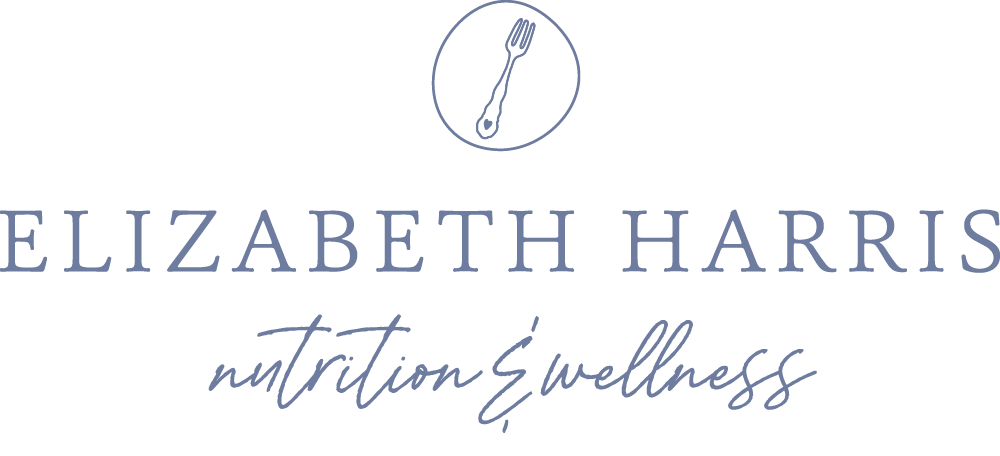Foods and eating patterns to improve your moods—and why it matters for your health and wellness goals
It’s hard to prioritize your wellness and crush your nutrition and health goals when you’re feeling down in the dumps.
So, let’s talk about foods and eating patterns you can ADD to your nutrition routine (as you know this is my favorite approach!) to help stabilize your moods, lift your spirits, and help get you in a positive, can-do mindset.
First and foremost, aim to eat a well-balanced diet rich in lean proteins, antioxidants, vitamins, minerals, fiber, whole grains, and healthful fats to support your cognitive function, help regulate your emotions, and generally improve your energy levels and moods. A variety of specific nutrients are needed to extract fuel from the foods we eat...produce neurotransmitters that help regulate our emotions…and release hormones that impact our stress response. Eating a variety of nutrient-dense foods is the easiest way to make sure you’re getting what your body needs.
Quick tip: An easy strategy for putting this into practice is to fill ½ your plate with colorful fruits and veg, ¼ with lean protein, and ¼ with whole grains at each meal. (Win-win: this is also an excellent weight-management strategy.)
Second, remember to eat at regular intervals (shoot for every 4-5 hours at most) to balance your blood sugar levels and keep your energy levels and moods stable. I call this the 'goodbye “hangry” outbursts' approach!
Next, there are some specific foods that can contribute to happy, feel-good vibes:
Yogurt, kimchi, miso, kefir: These are all good sources of beneficial probiotics (live bacteria), which help support gut health. Your gut microbiota, a fancy word that refers to the extensive colony of bacteria in your gut, is often referred to as your “second brain.” That’s because your gut is connected to your brain through millions of neurons, and among other critical functions, it plays a key role in regulating the release of serotonin and dopamine, often called the “happy hormones.”
Bananas, onions, garlic, leeks: These foods contain prebiotic fibers which are also necessary to maintain a healthy gut. Green bananas as well as cooked and then cooled potatoes also contain another form of prebiotics called resistant starches. Essentially, you can think of prebiotics as food for the probiotics. Bacteria need to eat too!
Potatoes, grains, pork: The B vitamins found in these (and other) foods help your body produce serotonin, GABA, and other neurotransmitters that influence moods, along with melatonin, which helps regulate sleep. (I don’t know about you but I’m waaaaay grouchier when I don’t get enough sleep.)
Salmon, walnuts, hemp seeds: You can think of the omega-3 fatty acids, including EPA and DHA, as the “feel-good fats.” Research has shown that high omega 3 intake is correlatedwith a decreased incidence of depression and that omega 3s may even have protective effects against depressive symptoms. They offer loads of other health benefits too.
Quick tip: Sprinkle hemp seeds on yogurt, salads, or cereal, or toss them in a smoothie.
HOW you eat is also important...
Lastly, and perhaps my personal favorite, mindful eating has been associated with a lower incidence of depression and depressive symptoms and enhanced mental well-being in certain studies. In my opinion, learning to eat mindfully can be absolutely game-changing in terms of meeting your nutrition goals and feeling your best.
To practice mindful eating and experience its potential mood-enhancing effects, remember to:
Slow down and tune into the experience of eating as much as and whenever possible.
Eliminate distractions such as TV, podcasts, books, or anything else that takes your attention away from the experience of enjoying your meal.
Truly savor your food—notice and appreciate the smells, texture, colors, and flavors, and more.
Respect your hunger and fullness cues. We tend to lose touch with these gut signals as we age, but with practice you can relearn your body's hunger and satiety sensations and retrain yourself to let them guide your food intake. Learning to recognize and honor these signals can be a mindfulness practice in and of itself!
Let go of judgment and approach your food choices like an anthropologist. Try to simply notice how different foods, portion sizes, and other eating circumstances make you feel and use that information to inform future choices. That’s it. No judgment or negative self-talk allowed.
When we feel good, it’s easier to “choose good.” And positive choices that support our health and wellness goals have a way of multiplying…with one healthful action informing and influencing the next and so on. Before you know it, your healthful habits are stacking up, crowding out unhelpful ones, and you’re crushing your goals one after another!
Here’s to a happy, healthy you!

